Bricks come in a variety of compositions, each with distinct qualities that make them suitable for different uses and designs. You’ve probably noticed some of their differences as you encounter them day to day – brick is hard to miss because it’s such a ubiquitous material in construction and landscaping!
Two categories of brick that are of special concern to homeowners with fireplaces and wood stoves are common brick and firebrick. While they share some similarities, the unique properties of these types of brick lend themselves to different purposes. Knowing which to use where will help you maximize the efficiency and longevity of your heating system.
What Is Common Brick?
 Common brick has many names – you may have heard of it referred to as red brick, burnt brick, clay brick, or building brick. It’s a time-tested (and time-improved) building material used very widely in general construction. Common bricks are made from clay, molded into shape, and fired in a kiln for strength and durability. Once fired, they’re ready to use, often in conjunction with plastering or bonding with mortar.
Common brick has many names – you may have heard of it referred to as red brick, burnt brick, clay brick, or building brick. It’s a time-tested (and time-improved) building material used very widely in general construction. Common bricks are made from clay, molded into shape, and fired in a kiln for strength and durability. Once fired, they’re ready to use, often in conjunction with plastering or bonding with mortar.
It’s worth noting that within the category of “common brick,” there’s a good deal of variability. Common bricks are divided into four categories based on quality, with first-class bricks considered the highest grade.
- First-class bricks have the highest degree of uniformity and durability.
- Second-class bricks may be irregular in shape or rough in surface, but are of better and more reliable quality than third- or fourth-class bricks.
- Third-class bricks are rather low quality, perhaps marked by cracking and exhibiting a lack of consistency in shape and texture. They can’t be relied upon for us in permanent structures, but may be used for temporary ones.
- Fourth-class bricks are of the poorest quality and are often broken down for use as an aggregate.
What Is Firebrick?
Firebrick is a specialized type of brick composed of what’s known as fireclay, specially formulated earth with a high aluminum oxide content. Aluminum oxide, more commonly known as alumina, is a white, high-hardness ceramic that can withstand a great deal of heat.
Because firebrick, also known as refractory brick or heat-resistant brick, is made of materials like alumina and silica, it can retain its integrity even after exposure to extreme temperatures. Common brick has some moderate heat-resistance, but cannot withstand high temperatures without deterioration. Firebrick is up to the challenge, withstanding much greater heat thresholds than common brick.
The strength of firebrick isn’t only in enduring high heat, however. It can also withstand a greater degree of thermal shock than common brick, meaning that it’s less likely to crack or break in the face of sudden or extreme temperature changes. And it also doesn’t transfer heat easily, meaning it absorbs it without quickly losing it to the surrounding area, which makes it a great insulator.
So, What’s the Better Brick?
Common brick and firebrick are both highly useful in their own right, and are often used in tandem to maximize the benefits of each. Common brick has excellent compressive strength, greater porosity (and therefore less density), and a relatively inexpensive price tag. Firebrick is more costly, more dense and smooth in texture, very strong, and, of course, has excellent thermal qualities.
It’s common for these two types of brick to be combined even within one system.
 In appearance, firebrick is naturally light in color, although it can be dyed in the manufacturing process. Its uniform texture and denseness help increase its ability to retain heat efficiently. Common brick, on the other hand, can vary widely in color, texture, and density, depending on the specific clay and firing process used.
In appearance, firebrick is naturally light in color, although it can be dyed in the manufacturing process. Its uniform texture and denseness help increase its ability to retain heat efficiently. Common brick, on the other hand, can vary widely in color, texture, and density, depending on the specific clay and firing process used.
Common brick is used in load-bearing walls, columns, facades, patios, and many other structural (or decorative) elements. Well-laid, high quality brick, can last beyond a lifetime, especially when properly maintained.
If the project at hand requires resistance to fire, then it’s time to reach for the firebrick. Firebrick is commonly used in the construction of furnaces, kilns, fireplaces, stoves, and other heating appliances where flame is contained or high heat is generated.
Long story short… It’s common for these two types of brick to be combined even within one system. For instance, if you have a chimney system, it’s likely that while your firebox – the area that the fire is actually built in – will be made of firebrick, the rest of the chimney will be constructed of common brick or cement block, with terracotta flue tiles.
Questions? Reach Out To Us
Chimney industry professionals play a crucial role in constructing and maintaining heating systems. You wouldn’t trust your home to just anyone, so make sure that when you have questions about crucial home heating systems you look for a company that is certified, experienced, licensed, and insured – like us!
We can assess the specific heating requirements of your living space and recommend the most suitable materials for the project with well-informed attention to various factors – such as heat resistance, insulation, efficiency, and proper ventilation. We’ll also help you identify any concerns in existing brick and find solutions, ensuring you’ll enjoy your fireplace or stove for years to come.
Give us a call at 530-285-3841 or request your next appointment online now.

Recent Comments